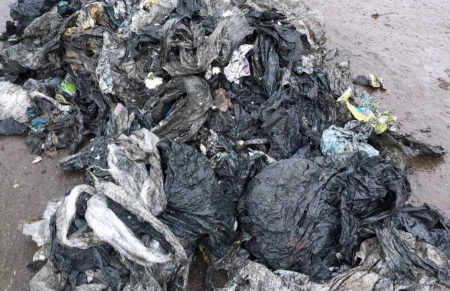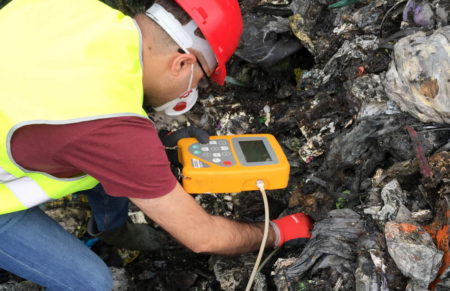Mar
28
Can Money Be Made From Landfill Cleanup?
March 28, 2018 | Leave a Comment
Sweden’s Linnaeus University’s doctoral candidate Yahya Jani can demonstrate decontamination of landfills and open dumpsites could prove profitable both financially and for the environment. Landfill cleanup profits are getting closer.
Environmental pollution, health threats and scarcity of raw materials, water, food and energy are some of the greatest challenges our world is facing today. At the same time, landfills and open dumpsites are still the dominant global waste disposal options, despite the fact that the long-term environmental impact in the form of emissions of greenhouse gases and contaminated leachates is significant.
However, much of the environmentally hazardous waste that has been dumped at landfills can be recycled as energy or reused as valuable raw materials in different industries according to Yahya Jani, doctor of environmental science and chemical engineering.
In his dissertation, landfill mining is suggested as a tool to achieve an enhanced full cycling circular economy model. Viewing the landfill waste as a potential resource instead of as a problem is a common thread in Jani’s research.
Jani explained, “More than 50% of the deposited waste dumped at landfills and open dump sites can be recycled as energy or reused as raw materials. These materials can be used as secondary resources in different industries instead of being forgotten or viewed as garbage.”

Plastic wastes can be incinerated to produce energy. Image Credit: Yahya Jani. Click image for the largest view. More images at the press release link above at the bottom of the text.
His research also includes the extraction of metals from Småland’s art and crystal glass waste and different fine fractions.
Jani noted, “I developed a method that enables the extraction of 99% of the metals from the glass waste that was dumped at Pukeberg’s glassworks and published the results. It is the first published article in the world that deals with recycling of metals from art and crystal glass.”
In his research study at Glasriket, Jani also used chemical extraction to recycle materials from a mix of glass waste and soil fine fractions smaller than 2 mm. The technology involves mixing old glass waste with chemicals to reduce the melting point of the glass waste in order to extract the metals.
“The methods I’ve developed to extract metals from Småland’s glass waste can be used to extract metals from all types of glass, like, for instance, the glass in old TV sets and computers. Thus, this method can be further developed at an industrial facility for the recycling of both glass and metals of high purity. This can also contribute to a restoration of Småland’s glass industry by providing the industry with cheap raw materials. In addition, the extraction of materials from old landfills contributes to the decontamination of these sites and reduces the environmental impact and health threats” Jani concluded.
According to the European commission in 2017, 60% (that is to say, 1,800 million tons) of the annually produced waste from 500 million EU inhabitants ended up in landfills. In his dissertation, Jani shows that the extraction of valuable materials from this waste could contribute to reducing the overuse of natural resources on Earth and reduce the emissions of greenhouse gases like carbon dioxide and contaminated leachates, which are responsible for pollution of water resources. Decontamination of these places will contribute to a significantly reduced impact on both human health and the environment.
The results from Jani’s dissertation shed light on the need to view the dumped waste as a secondary resource and landfills and dumpsites as future bank accounts where future raw materials can be extracted instead of viewing them as a burden for human health and the environment.
Recovering the resources and energy from landfills is a worrisome concept. For most all the world, developed or not, waste is concentrating some rather awful pollutants near to or in human habitation areas. Plus there is a huge supply of energy, raw materials and soil fertility products that could become available. And there remain a bunch of developed world landfills without barriers to keep the leachout from ground water and streams to lakes and oceans. There are superfund options in the U.S., but not all of the world has grasped the significance of the opportunities and risks.
The potential for profit is being seen now and that is encouraging. But enough profit has to incentivize profit making along with pollution control to drive some action. Other than the U.S.’s expensive super fund sites the world hasn’t caught on in a big way yet. Jani has found a way for more of the trash to be profitable, one more step to mining the landfills out and keeping the pollutants out of our lives.


